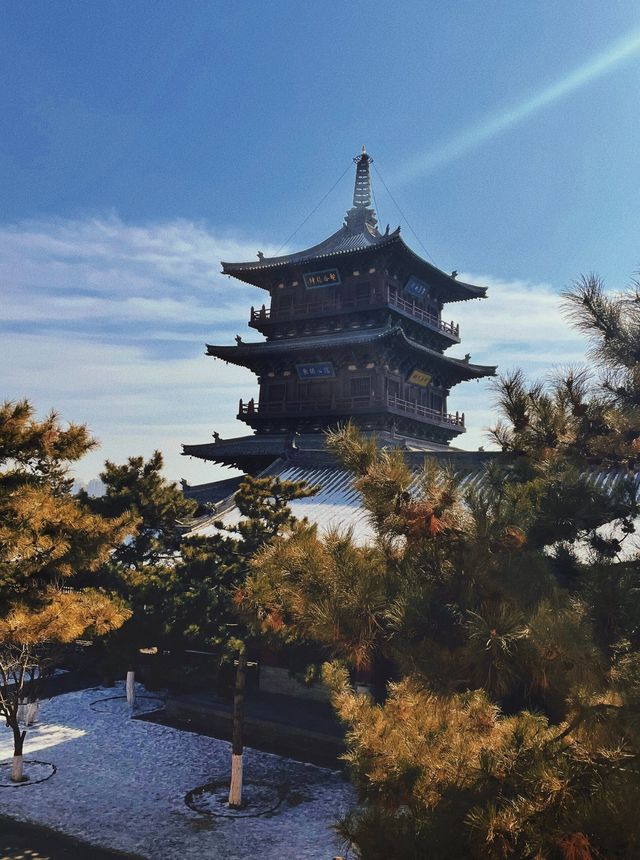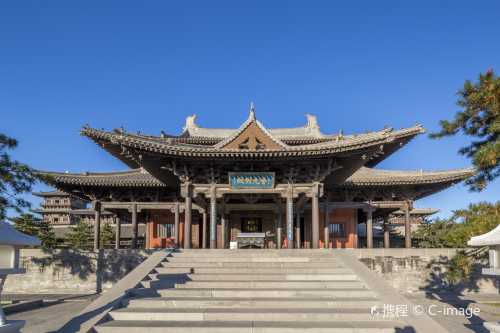Popular Trip Moments
Datong Ancient City: A Luxurious Stay at 12+ Garden Hotel | Summer Must-Do! 7-Day In-Depth Hanging Temple Tour Guide | A Must-Visit Destination for Summer Vacation: The Hanging Temple!!! | Must-Visit Spot in the Millennium Buddhist Kingdom: A 7-Day Itinerary | Summer Travel Guide: 2 Days and 1 Night in Changzhi | How to Explore Shanxi: A 6-Day, 5-Night Pure Travel Guide | Datong is back, no scams here, just pure honesty | Home to the "First Pass Under Heaven," the ancient city of Daizhou is worth your immediate departure | Datong | Average 22°C! Stay in These 8 "Reverse Summer Escape" Towns for Cooler Comfort Than AC | 3-Day Datong Travel Guide! | Datong is incredibly beautiful, but I honestly don't recommend visiting in July because............. | # Datong Summer Escape: Travel Through Millennia, Encounter Endless Surprises in the Ancient City! | Eat well, play well, and be happy every day without worries | Escaping the crowded cities, have you tried it? | Pingyao Ancient City, Yungang Grottoes, Wutai Mountain… How many top-notch attractions does Shanxi hide? | Discover Shanxi and Rediscover 5,000 Years of Chinese Civilization | After visiting Shanhua Temple four times, I finally figured it all out | Staying in a Picture-Perfect Courtyard House | Shanxi is so "earthy" it gets mocked? But its cultural depth leaves the nation speechless | Shanxi Datong Zhaojia Village Apricot Picking Guide: A Sweet Summer Encounter | The Filming Location of Black Myth: Wukong - Longxing Temple's Thousand-Year-Old Pagoda | Shanxi | 4 Days & 3 Nights | July Off-the-Beaten-Path Travel: Budget-Friendly Trips to Three Cozy Cities | Encounter a rendezvous of lake and sunlight at Meiman | Datong | Datong Volcano Group National Geological Park | 🕰 Datong: Spiritual & Architectual Wonders ! | A museum where you can stay | If you want to sleep somewhere different, be sure to come to Yunxiju | Datong 2 Days Travel Guide
Popular Destinations
Andalsnes Travel | Baicheng Travel | Hexigten Banner Travel | Lynton and Lynmouth Travel | Türkiye Travel | Levante Almeriense Travel | Zihuatanejo de Azueta Travel | Zhao'an Travel | Kunshan Travel | Northeast Penang Island Travel | Caledon Travel | Toyako Travel | Rotorua Travel | Wimberley Travel | Dunblane Travel | Cook County Travel | Auburn Travel | Box Butte County Travel | Province of Crotone Travel | Carterton District Travel | Sihui Travel | Puerto Natales Travel | Kent County Travel | Worthen with Shelve Travel | Xinyi Travel | Risaralda Travel | Ripon Travel | Alpine Travel | Santiago de Compostela Travel
Recommended Attractions at Popular Destinations
Popular Attractions in Bangkok | Popular Attractions in Manila | Popular Attractions in Tokyo | Popular Attractions in Taipei | Popular Attractions in Hong Kong | Popular Attractions in Seoul | Popular Attractions in Kuala Lumpur | Popular Attractions in Los Angeles | Popular Attractions in Shanghai | Popular Attractions in New York | Popular Attractions in Shenzhen | Popular Attractions in Osaka | Popular Attractions in Singapore | Popular Attractions in London | Popular Attractions in Guangzhou | Popular Attractions in San Francisco | Popular Attractions in Beijing | Popular Attractions in Macau | Popular Attractions in Bali | Popular Attractions in Jakarta | Popular Attractions in Paris | Popular Attractions in Ho Chi Minh City | Popular Attractions in Istanbul | Popular Attractions in Phuket | Popular Attractions in Chicago | Popular Attractions in Seattle | Popular Attractions in Toronto | Popular Attractions in Orlando | Popular Attractions in Cebu | Popular Attractions in Chiang Mai
Popular Attractions
Xian Banpo Museum | Wangxian Bridge | Huaqing Palace | Emperor Qinshihuang's Mausoleum Site Museum | Huajue Lane, the Great Mosque | Shaanxi History Museum | Dongyue Temple | West Park | Puji Temple | Putuoshan Duobao Tower | Nantianmen | Zizhulin | Site of Yumen Pass | Dunhuang Folk Museum | Mogao Caves | Lost City | Xian'an Stone Forest | Maogan Qianlong Cave | The Stadthuys | Nanwan Monkey Islet | Sanpōsan Shrine | Saint Margherita | Lotus Garden of East Lake | Railwaymen Palace of Culture | Jai Hanuman Mandir | Parco pubblico | Cooper Creek Fitness Trail | Oponkowa kraina | Aspen Fly Fishing | Ehrenmal Kaköhl
Popular Restaurants in Datong
Fenglinge | ZINI 369 CULIANG JI | 龙聚祥烧麦馆(鼓楼店) | KAI GE JIU LOU | LAO YE MIAO FENG WEI MEI SHI FU | Huayuanda Restaurant | 红旗大饭店(火车站店) | Kaige Restaurant (caochangcheng) | Northern Wei family feast | Howard Johnson Golden Land Hotel Chinese Restaurant | 王府至尊酒店·自助餐厅 | Caijia Restaurant (yong'andajie) | 王府至尊酒店中餐厅 | 凯鸽火锅城(迎宾西路店) | Jinbeilaochu | 紫泥砂锅居(龙港苑店) | 紫泥369粗粮季(南环店) | 凯鸽酒楼(水泉湾龙园店) | 凤临阁·味庄 | Kaigehualin Hot Pot | 紫泥369粗粮季(西环店) | Kaige Hot Pot (shangyuecheng) | 大同玺云酒店·玺厨餐厅 | 蔡家酒楼(一德街店) | 魏都宴 | 巴贝拉意式休闲餐厅(大同百盛购物中心店) | Guloudongjielao Hot Pot (xihuan) | Kaige Restaurant (huabeixing) | 甜心频道(向阳街店) | 胖之味果木烤鸭(迎泽街店)
Popular Ranked Lists
Popular Luxury Hotels Near Port Macquarie | Top 50 Must-Visit Restaurants in Shenzhen | Top 50 Must-Visit Restaurants in Berlin | Popular Premium Hotels in Tehran | Top 50 Must-Visit Restaurants in Sanya | Popular Best Things to Do in Yuyao | Popular Best Things to Do in Wuzhishan | Popular Luxury Hotels Near Pirmam | Popular Best Things to Do in Xuchang | Popular Best Things to Do in Kaiping | Popular Premium Hotels Near Monroe County | Top 50 Must-Visit Restaurants in Chiang Mai | Top 50 Must-Visit Restaurants in Chongqing | Top 50 Must-Visit Restaurants in George Town | Top 50 Must-Visit Restaurants in Dalat | Popular Luxury Hotels Near Slupski | Popular Best Things to Do in Huainan | Popular Best Things to Do in Jishou | Popular Best Things to Do in Cangzhou | Top 10 Best Things to Do in Huaihua | Top 10 Best Things to Do in Altay Prefecture | Popular Best Things to Do in Libo | Popular Best Things to Do in Luanping | Top 50 Must-Visit Restaurants in Auckland | Top 50 Must-Visit Restaurants in Nanjing | Top 50 Must-Visit Restaurants in Seoul | Popular Best Things to Do in Sheyang | Popular Best Things to Do in Bozhou | Popular Luxury Hotels Near Gagra | Popular Best Things to Do in Zhijiang
About
Payment Methods
Our Partners
Copyright © 2025 Trip.com Travel Singapore Pte. Ltd. All rights reserved
Site Operator: Trip.com Travel Singapore Pte. Ltd.
Site Operator: Trip.com Travel Singapore Pte. Ltd.



















